At Chrysler, before Daimler, a fleet engineering team handled police cars, taxis, and performance cars—all the “special interest” vehicles. During the 1980s, Bob Lees headed this area. That team also personally took the police cars to the Michigan State Police and California Highway Patrol tests.

The nature of the work required many, many changes, mostly involving durability rather than power. To quote Bob Lees, “The police are like greyhounds at a rabbit track: when they see somebody doing something wrong they have complete focus on them and they take off after them. They don’t care if they are jumping curbs, or going over ditches or through hedges, they want to catch that person. So you do a lot to reinforce the suspension. You do things to the engine to make it last longer, and handle high speed work.”
Police cars endured all the normal testing of retail models, as well as numerous extra tests for tougher conditions. Changes from regular cars to police cars included:

Chrysler usually offered a range of engines, including lower-powered models for city police, who had lower needs for power and higher needs for economy, and top-performance versions for rural and state police who may need a sustained pursuit without radio help from other officers. Both versions had high durability. To quote Bob Lees, “A police car is not going to catch a Ferrari, it’s not that fast. More than anything you want durability to be able to take the rough work, the rough roads and the pursuit work, or sitting by the side of the highway with the lights and radio going, sitting and idling for hours, even in the heat in the desert, and everything else. That’s where the emphasis is.”
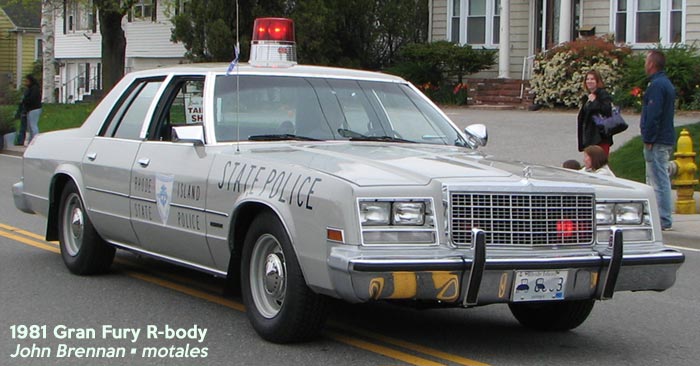
Police could often catch criminals by chasing until the criminals’ cars failed. The famed New York City chase which inspired the one in The French Connection ended when a detective’s personal Plymouth outlasted the criminals’ car, which fell apart from the rough New York roads. (The city’s police cars did not make the cut, either, and that’s when New York City switched to Mopars—until Chrysler left the business.)
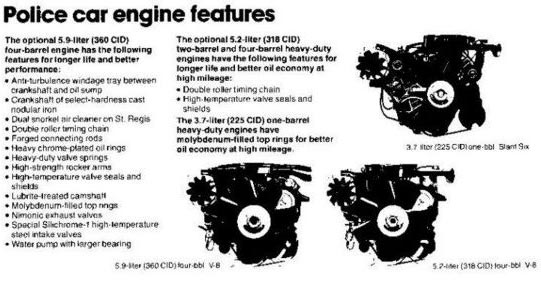
Upgrades generally included:
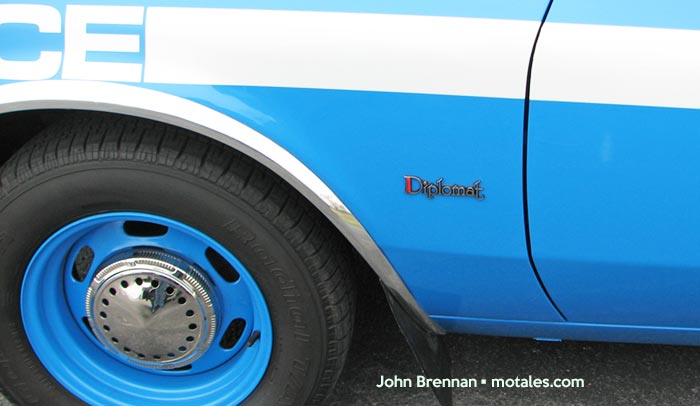
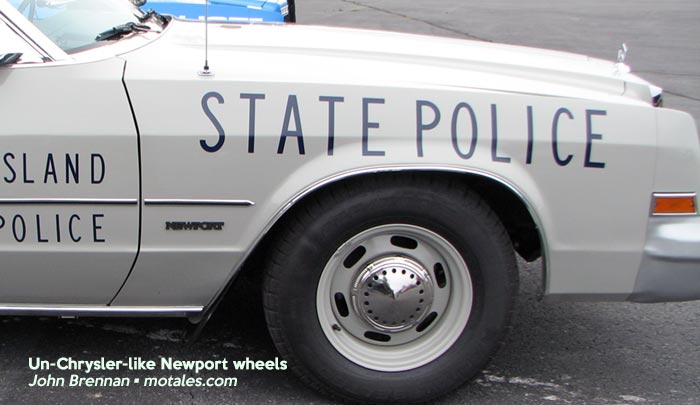
Modern Dodge Charger police cars can also have 360° cameras, computer mounts in the trunk, extra-large screens, swing-out keyboards, and other modern gear.
 Dodge Intrepid: the police car
Dodge Intrepid: the police car
Agile, surprisingly quick front while drive pursuit vehicles
 Plymouth police cars of 1976
Plymouth police cars of 1976
Downsized but strong
 Car Spotter: 1971 Plymouth Fury Pursuit Car
Car Spotter: 1971 Plymouth Fury Pursuit Car
Big and classy police car
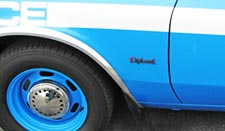 Making police cars: who and what was involved?
Making police cars: who and what was involved?
Diving into the changes that make an ordinary car into a pursuit vehicle (or just an ordinary police car)
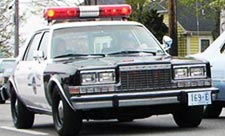 Prototypical police cars: Dodge Diplomat and Plymouth Gran Fury
Prototypical police cars: Dodge Diplomat and Plymouth Gran Fury
Inside the M-body Dodge Diplomat and Plymouth Gran Fury that defined how police cars should look for at least a decade
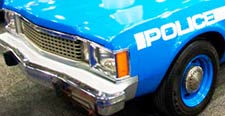 Mopar police cars of 1980: St. Regis/Gran Fury, Aspen/Volare, B-Van
Mopar police cars of 1980: St. Regis/Gran Fury, Aspen/Volare, B-Van
The last of the big Plymouth and Dodge police cars, in their penultimate year, with the final F-body squads
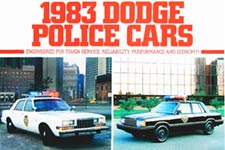 Mopar police cars of 1983: Diplomat/Gran Fury and Reliant/Aries
Mopar police cars of 1983: Diplomat/Gran Fury and Reliant/Aries
Two quite different approaches to police cars, with front and rear wheel drive, powered by V8 and four-cylinder engines
Copyright © 2021-2025 Zatz LLC • Chrysler / Mopar car stories and history.
YouTube • Editorial Guidelines • Videos
Tailfins Archive • MoTales on BlueSky